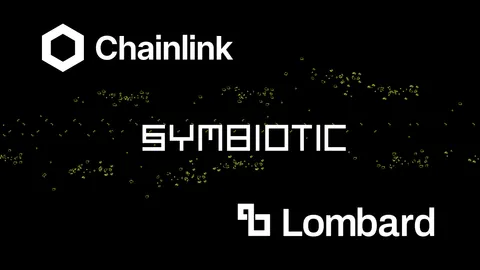Shared security has emerged as a powerful primitive for aligning incentives and enhancing network security. While we've previously covered Symbiotic's core components more broadly, today we're diving deeper into one of its most crucial elements: Resolvers.
As mentioned in a previous post, Symbiotic provides immutable rails that allow parties to enter into alignment agreements without intermediaries. This simple yet powerful primitive unlocks a vast design space with multiple actors:
- Collateral: The core, which can be any asset on nearly any chain.
- Vaults: The flexible staking layer connecting collateral to networks.
- Curators: An implicit layer consisting of managers of scoring and risk assessment.
- Operators: Entities running infrastructure components for networks.
- Networks: Service providers seeking decentralization.
- Resolvers: Slashing managers and arbitration systems.
At their core, resolvers are entities or contracts tasked with passing or vetoing slashing penalties and can be shared across networks. Resolvers are determined through terms proposed by networks (and accepted by vaults) seeking to provide collateral backing to operators. Symbiotic’s flexibility allows for vaults to select multiple different (or even no) resolvers to cover their collateral. Furthermore, decentralized dispute resolution frameworks can be used as resolvers. Symbiotic’s design also allows for the possibility for a quorum of resolvers to veto or pass a specific slashing incident.
Resolvers in Symbiotic perform several key functions:
- Handling Slashing Incidents: Resolvers are the first line of defense when it comes to managing slashing events. They assess the validity of slashing requests and determine whether they should be executed or vetoed.
- Veto Power: One of the most important powers of resolvers is their ability to veto slashing requests. This veto power acts as a safeguard against potentially unfair or erroneous slashing attempts.
- Creating a Layer of Security and Fairness: By acting as arbiters, resolvers help maintain the integrity of the entire system, ensuring that the security of the network is maintained.
Symbiotic's modular design allows for various types of resolvers:
- Smart Contract-Based Resolvers: These automated resolvers can handle objectively provable slashing infractions without human intervention, such as objectively provable faults. These resolvers are network-specific in order to implement tailored slashing mechanisms for each network.
- Committee-Based Resolvers: Human committees or DAOs can be formed to assess more complex or subjective slashing scenarios.
- Integration with Existing Frameworks: Symbiotic can leverage established dispute resolution platforms like UMA, Kleros, or reality.eth, tapping into their expertise and infrastructure.
- Intent-Based Resolvers: These would operate on the principle of desired outcomes rather than specific actions, aligning with emerging paradigms in blockchain interaction. They could allow for more flexible and efficient dispute resolution by specifying "what" should be achieved rather than "how".
The Veto Process
The veto process in Symbiotic is designed to be both fair and efficient:
- After a slashing request is submitted, there's a set period (Veto duration) for resolvers to issue a veto.
- Resolvers can cancel part or all of the slashing, depending on their assessment and the vault's configuration.
- If the slashing isn't fully resolved after this phase, there's another period (Epoch duration) to execute the slashing.
- Any participant can execute the slashing if it passes the resolver phase.
This process ensures that there's ample opportunity for review while also maintaining the efficiency of the system.
The Future of Resolvers
As the shared security space continues to grow, so will the role and implementation of resolvers in Symbiotic:
- We anticipate the emergence of new types of resolvers, each bringing unique capabilities to the ecosystem.
- The mechanisms governing resolvers are likely to evolve, becoming more sophisticated and efficient over time.
- There are exciting research opportunities in resolver design and implementation, which could lead to groundbreaking innovations and overall improvements for networks.
Resolver Recap
The implementation of resolvers in Symbiotic brings numerous benefits to all participants:
- Enhanced Security: By providing a layer of oversight, resolvers significantly enhance the security of the entire system. Security can be layered by using a quorum of resolvers that can veto or pass specific slashing incidents.
- Increased Flexibility in Risk Management: The ability to use multiple resolvers and allocate collateral percentages allows for sophisticated risk management strategies.
- Fair and Transparent Dispute Resolution: The resolver system promotes a fair and transparent process for handling disputes and slashing incidents.
- Customizability: Networks and vaults can choose resolvers that best fit their specific needs and risk profiles.
Resolvers play a crucial role in Symbiotic's overall modular design. They interact seamlessly with other components like vaults, networks, and operators, contributing to the protocol's flexibility and robustness. This interplay allows for a highly adaptable system that can evolve over time.
As we continue to explore and expand the capabilities of Symbiotic, we invite the community to get involved. Whether you're a network builder, an operator, or simply an enthusiast interested in the future of shared security, there's a place for you. If you are interested in learning more or collaborating with Symbiotic, reach out to us here.



















